5 Most Common Roof Repairs in Raleigh, North Carolina
As with most everything to do with home ownership, roofs will eventually need to be repaired, or replaced.
Having a lot of trees around your home can be great for your privacy, and that lovely feeling of being out in nature. I for one am a big fan of greenery in the yard. As someone who’s been living in apartment complexes for the last couple of years, one of my favorite parts about going home is walking out in the back yard, picking up pinecones, twigs and branches.
Okay maybe not the picking up part, that’s just my parents using me to keep the yard clean, but still, trees are great...
...sometimes.
Unfortunately, having trees around your house is not great for the long-term health of your roofing system.
Trees around your house can cause a lot of unnecessary, preventable roof damage, especially if you have trees too close, or have branches hanging over your roof.
In this blog, we’re going to break down the different kinds of roof damage you may see from trees that are too close to, or are hanging over your house, including:
Let’s get started!
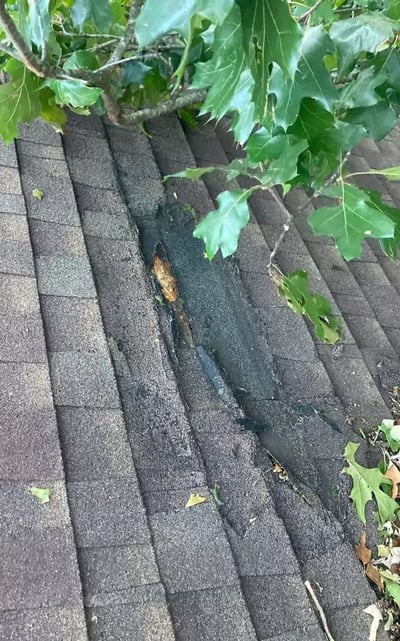
If you have a tree close to your house with some branches extending over your roof, you’re going to want to take care of that as soon as you can. You never know when the next big storm will come through town, and when it does, it could be strong enough to knock that branch down on top of your roof.
Trust me, you don’t want to be on the receiving end of that blow
Falling branches can wreak havoc on your roof. Branches do the same kind of damage as hail, just in much more severe, and concentrated blasts. Depending on the size of the limb, it will cause shingles to dent, crack, or even break off, exposing the roof decking. Sometimes, if it is an especially large branch, it could penetrate your roof entirely, puncturing the shingles, underlayment, and decking, leaving you with a pretty solid hole for water to run through a damage your home.
The best way to prevent this kind of damage is to be proactive about trimming back your tree branches, and ensuring that the trees closer to your home are in good health. If a tree is starting to look rotted or dead, that’s a sign you should get it taken care of, and fast.
Though they’re the biggest, and most problematic, branches aren’t the only things that fall from trees. They seem harmless, but leaves and twigs can build up on your roof over time, and if they clump together in specific areas, can actually create a surprising amount of damage.
Leaves, pine needles, twigs, and other small tree debris will usually find their way into areas on your roof that are already sensitive, like valleys, and around chimneys and dormers. In those areas, these materials can get wet more easily, weighing them down and clumping them together.
Those clumps will hold on to water like there’s no tomorrow, I mean, have you ever looked under pine straw after a rain shower? Even after a couple of days, the area underneath will be soaked. The same thing can happen up on your roof, where the moisture will wear on your shingles, and try its darndest to get up under them, and into your roof decking. If it does, it’ll cause the wood to rot and warp, which only means bad news for your roof.
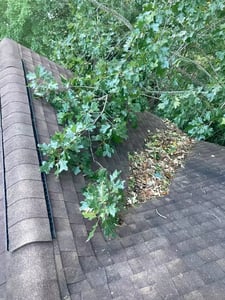
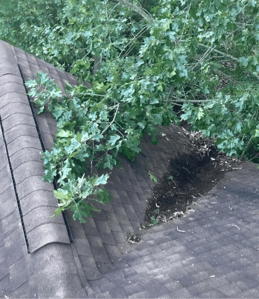
If you’re looking to avoid having this happen, you’ll want to either clean off your roof, or have it cleaned every few months or so, depending on how many trees you have.
Not only will those sneaky troublemaking leaves and twigs cause your shingles some problems, they’ll also give your gutters nightmares.
Your gutter system is designed to take the water that falls on your roof, and channel it down to the ground and a safe and controlled manner. If you didn’t have the gutters, water would just run straight off the roof and onto the ground, causing some muddy areas around the base of your home.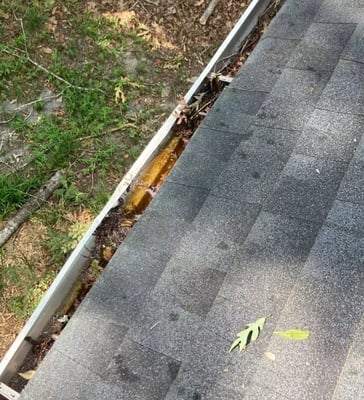
The same thing will happen if your gutters are clogged up and not functioning properly, which can happen surprisingly quickly when leaves end up in your gutters. The leaves and pine needles can end up clogging your downspouts, preventing water from coming through, and causing it to back up onto your roof, or spill over onto the ground. Either way, some pretty serious damage can happen.
If water backs up onto your roof, it will cause some severe wear to your shingles, and work its way up under them, to your roof decking. If water were to spill over the sides, it could start to soften the ground, and weaken your home’s foundation, which you definitely do not want happening.
The best way to counteract this is by cleaning your gutters out once every few months, depending on how many trees you have around your roof. It’s super important, so even though it’s not the most fun task, it’s something we all need to be aware of, and do.
The next bit of tree related damage that you’ll want to be aware of doesn’t actually come from your tree directly, but instead from the lack of sunlight that happens when you have trees all around your roof.
Without sunlight hitting your roof, it provides a nice cool environment for organisms like moss and algae to thrive. We’ve done an article all about the algae stains that you see on lots of asphalt roofs, but we’ll talk a little about them again here.
Algae isn’t dangerous to your roof’s overall structure, but they drastically change the appearance of your roof, and there’s not much you can do to clean it safely. Moss on the other hand, can grow up under your shingles, and cause them to pop up or crack, which will greatly increase your chances of leaks, and reduce your roof’s lifespan.
If you can keep your trees trimmed back to increase the amount of sunlight getting on your roof, we’d recommend doing that, otherwise, just keep up with the consistent cleaning that we’ve talked about throughout this article.
Having a tree fall on your house is one of every homeowner’s greatest fears, and rightfully so. Large trees can do intense damage not only to your roof, but to the overall structure of your home.
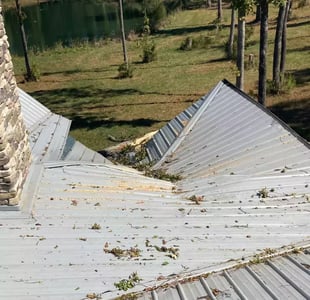
In the horrible event that this happens to you, you’ll want to be in touch with a disaster restoration company to help facilitate the repairs your home will need.
The best way to prevent something like this occurring is to consistently monitor the condition of the trees around your home. If one of them starts to show signs of advanced age, get it taken down in a controlled manner before it’s too late. Also, make sure that your trees aren’t too close to your home, as that can increase your risk for a tree disaster.
If you’re unsure about how many trees you have surrounding your home, you can always have a landscaping or roofing company come out to check out if they are too close or not.
On Tops Roofing has been providing roof repair, replacement, and inspection services to homeowners in the Triangle for over 30 years. Since 1991, we have installed over 15,000 new roofs, so whatever your roofing project will require, we’ve got the experience and tools to get the job done right.
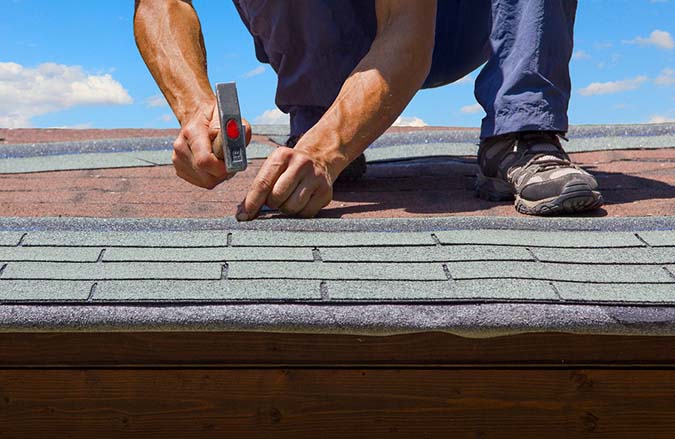
As with most everything to do with home ownership, roofs will eventually need to be repaired, or replaced.
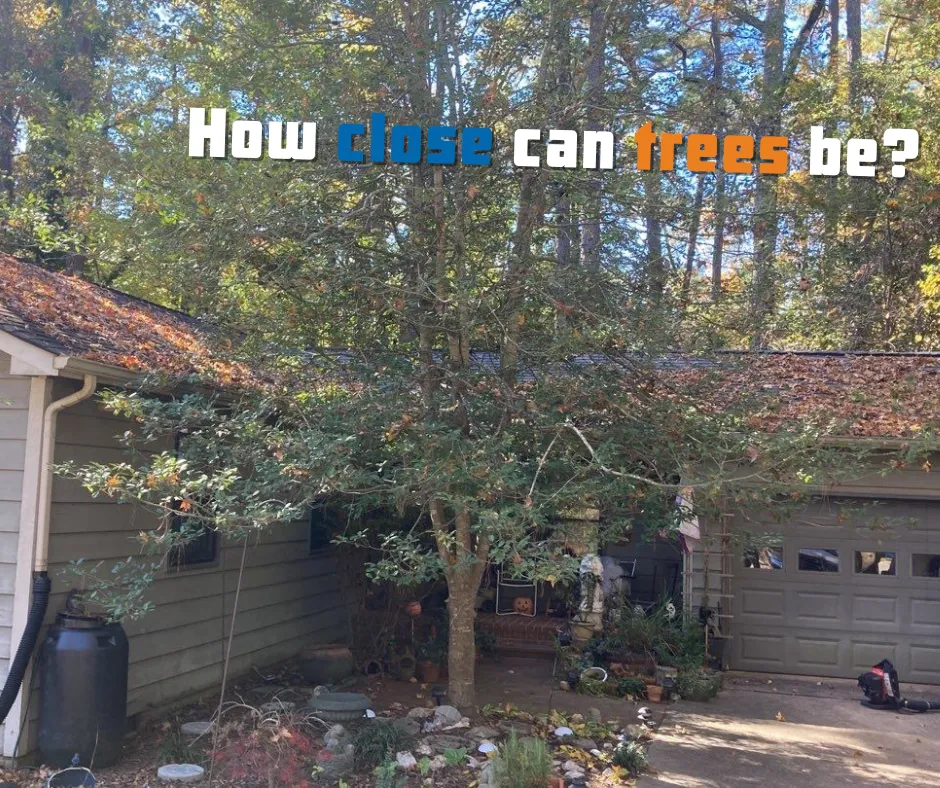
In the Raleigh region, an abundance of trees graces our landscapes, often flourishing in close proximity to our homes and extending their branches...
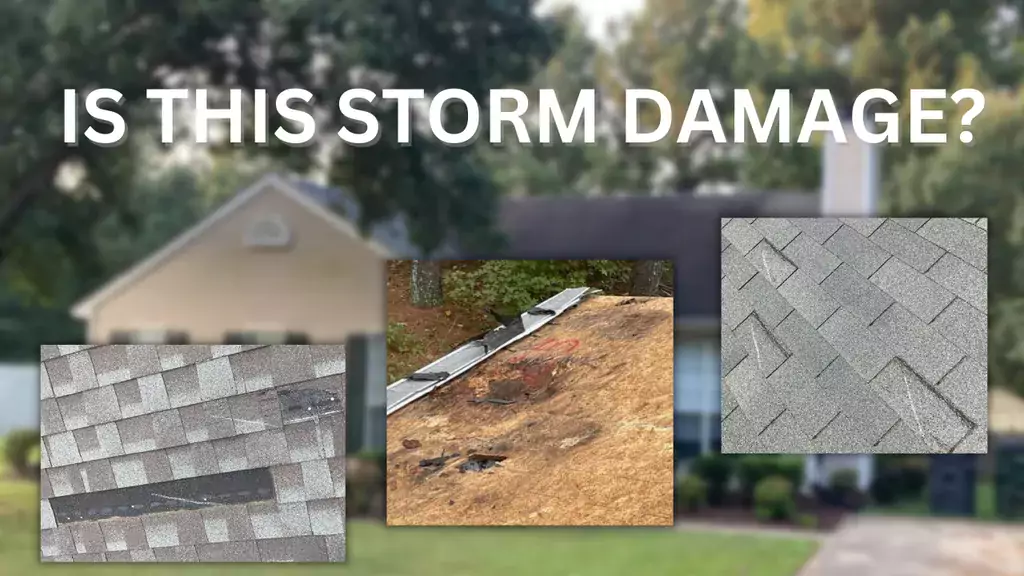
When stormy skies lie ahead, so too could dark days for our roofs. Our roofs are designed to protect us from the elements, but storms wear them down...